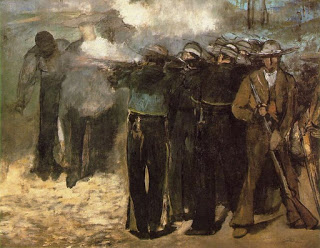As we enter a year of elections, not only in the United States, but elsewhere in Europe and beyond, minds turn inevitably to all the contentious issues of left, right, roles of government, the place of religion in society, jobs and the economy and how to improve life for people. There is, nevertheless, an interesting aspect to national discourse as Jawaharlal Nehru once sagely remarked, "The art of a people is the true mirror to their minds".
I don't believe I have heard a politician, in recent years, ever talk about how the mood and ethos of his or her nation can be read by looking at the art produced. Yet, if you think about it, it is a very good indicator of a lot of things. Even the size of art that is being produced is often tied, to some extent, to the state of the economy! The content and styles of art produced reflect or herald issues and attitudes prevalent in the country. Artists are often barometers of society but also, having to earn their living, they try, to some extent, to produce art that is saleable because it provokes a favourable response amongst the viewing public. In recent times of bubble-affluence, quite different art was being heralded as marvellous to what is now "in fashion".
If one thinks back to pre-Renaissance times, for instance, when the Roman Catholic Church was pre-eminent in society, artists were far more likely to achieve success by securing commissions to paint altar pieces or works that celebrated religion and their patrons' religious devotion. As religious diversity spread through Europe, artists adapted and many more genres of art - from floral ebullience to landscapes to portraits and beyond - became the norm. People became more worldly, and their tastes were mirrored in their support and choice of art.
Whether it is Western art, Japanese art, that of Iran, India or elsewhere, down the ages, art helps us understand the evolution of that country's society. Art is the mirror by which today's historians, architects, fashion designers, interior designers and others can learn of what previous generations deemed important, how they lived, dressed and behaved, even what political and religious attitudes they espoused.
Margate Imperialists, 1930s Roy Eastland metalpoint drawing (Courtesy of the artist)
I am left wondering what future generations will deduce from today's art about the state of our societies, country by country. I have a nasty feeling that it will not be a pretty picture shown in many of the mirrors left by artists as the creative representatives of their nation. But, in the spirit of a New Year promising better days, I hope I am wrong!

























